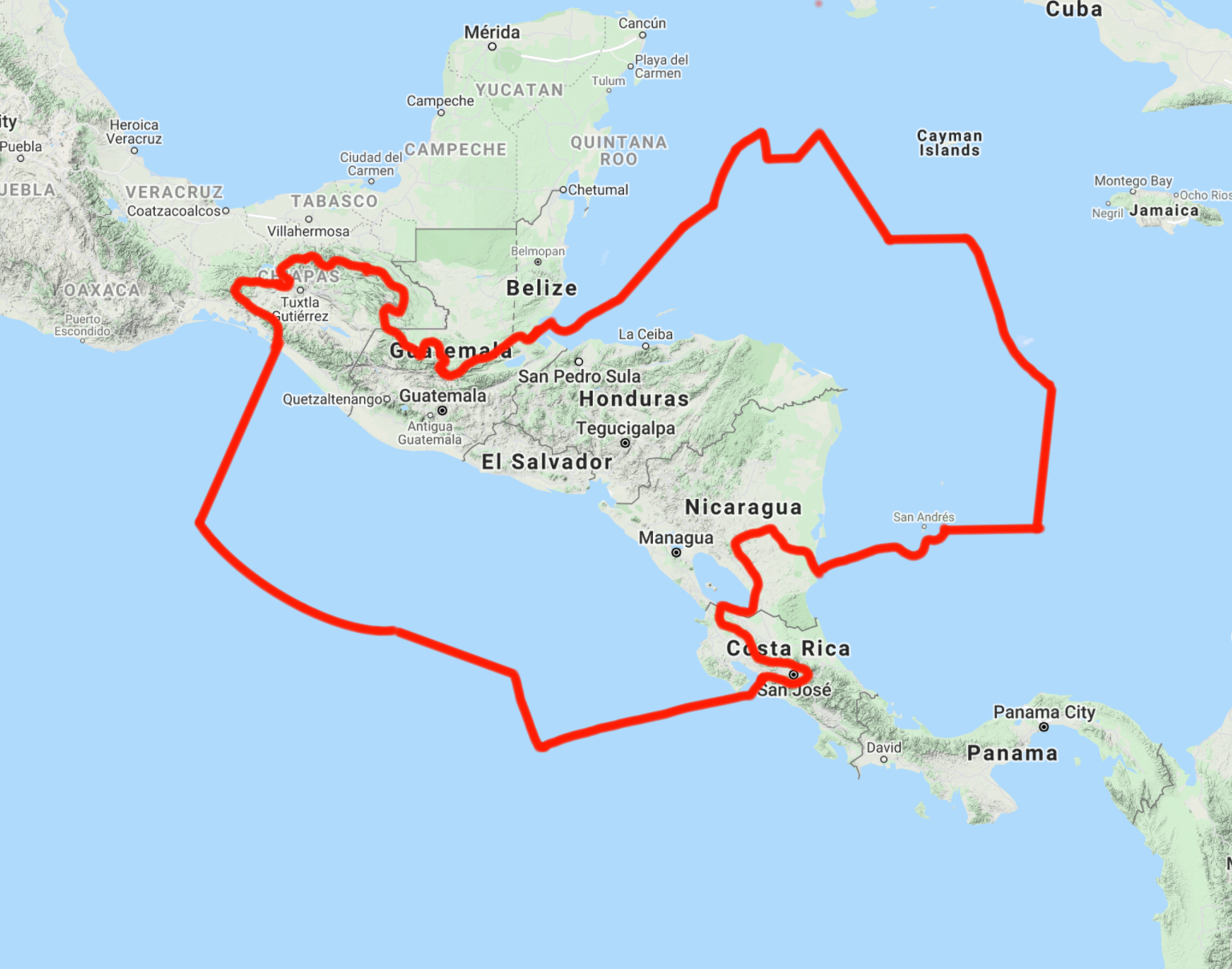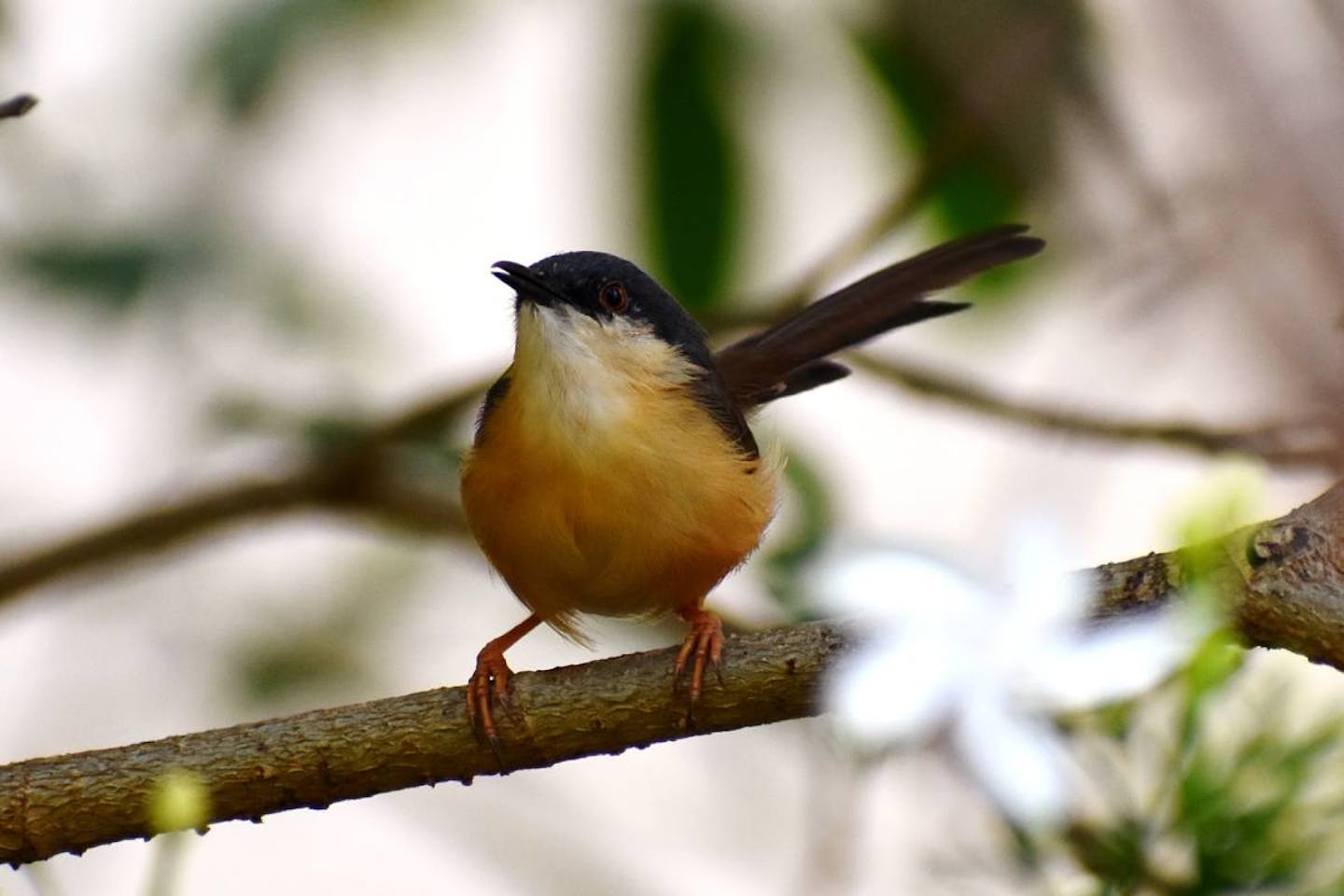Cocos cuckoo: a small bird that acts as a big predator on its island home
One Earth's “Species of the Week” series highlights the flagship species of each of the 844 unique ecoregions contained within Earth’s bioregions.
Hundreds of kilometers southwest of Costa Rica lies a remote, tropical paradise. Measuring only 7.6 kilometers (4.7 mi) long and 4.4 kilometers (2.7 mi) wide, Cocos Island has an ecological character not seen anywhere else in the world. The island has over 400 known insects, 90 bird species, and two endemic lizards. With no natural amphibians or mammals, the predator that has risen to the top of the food chain to keep the insect and lizard populations in balance are the birds. One of the most unique of these is the Cocos cuckoo.

Cocos cuckoos are the flagship species of the Cocos Island Moist Forests ecoregion, located in the Central American Mixed Forests bioregion (NT25).
Slick, grayish-brown feathers outline the cuckoo's face and back, in stark contrast to its bright yellow, poofy belly. With a body length of 32 centimeters (12.6 in) and weighing only 70 grams (2.5 oz), this small bird has a surprisingly large sound. A deep, guttural "kcha" can be heard throughout the island as Cocos cuckoos warn others of its territory.
Cocos cuckoos forage through thick vegetation feeding on various insects, hopping and running rather than flying. They have been observed consuming large prey compared to their body size, such as cicadas, Sphingidae caterpillars, and both island lizard species. With this diet, the cuckoos aid in the health of the island ecosystem by keeping pest populations in balance.
Courtship displays are most commonly observed December through February in hibiscus thickets and vine-tangles along streams. Cocos cuckoos spread and raise their fanned tails to expose the patterns underneath to potential mates. Both males and females sing a soft, sweet "kohh kohh kohh" song as they dance.

As the rarest bird on the island, little is known about the Cocos cuckoo's nesting habits. Chicks grow rapidly once hatched and typically leave the nest after about ten days. The young are able to climb into tree branches for protection once on their own.
Less than 1,000 individuals of Cocos cuckoos are estimated to live in the wild today. Tourists venturing to the island for scuba diving have introduced nest predators such as cats and rodents to the ecosystem, putting the cuckoos at further risk. Other animals such as feral deer, goats, and pigs have been brought to Cocos, degrading the habitat through vigorous grazing.
Just as human activity brought these threats to the island, efforts are now underway to save this unique ecology. Cocos cuckoos are classified as vulnerable in conservation status, and Cocos Island National Park became a UNESCO World Heritage Site in 1997. Only permitted scuba divers are allowed on the island during the day, and certified wildlife rangers are the sole overnight guests. Their mission is to protect and study the local biodiversity, such as the Cocos cuckoos.
Interested in learning more about the bioregions of Central America? Use One Earth's interactive Navigator to explore bioregions around the world.
Launch Bioregion Navigator


